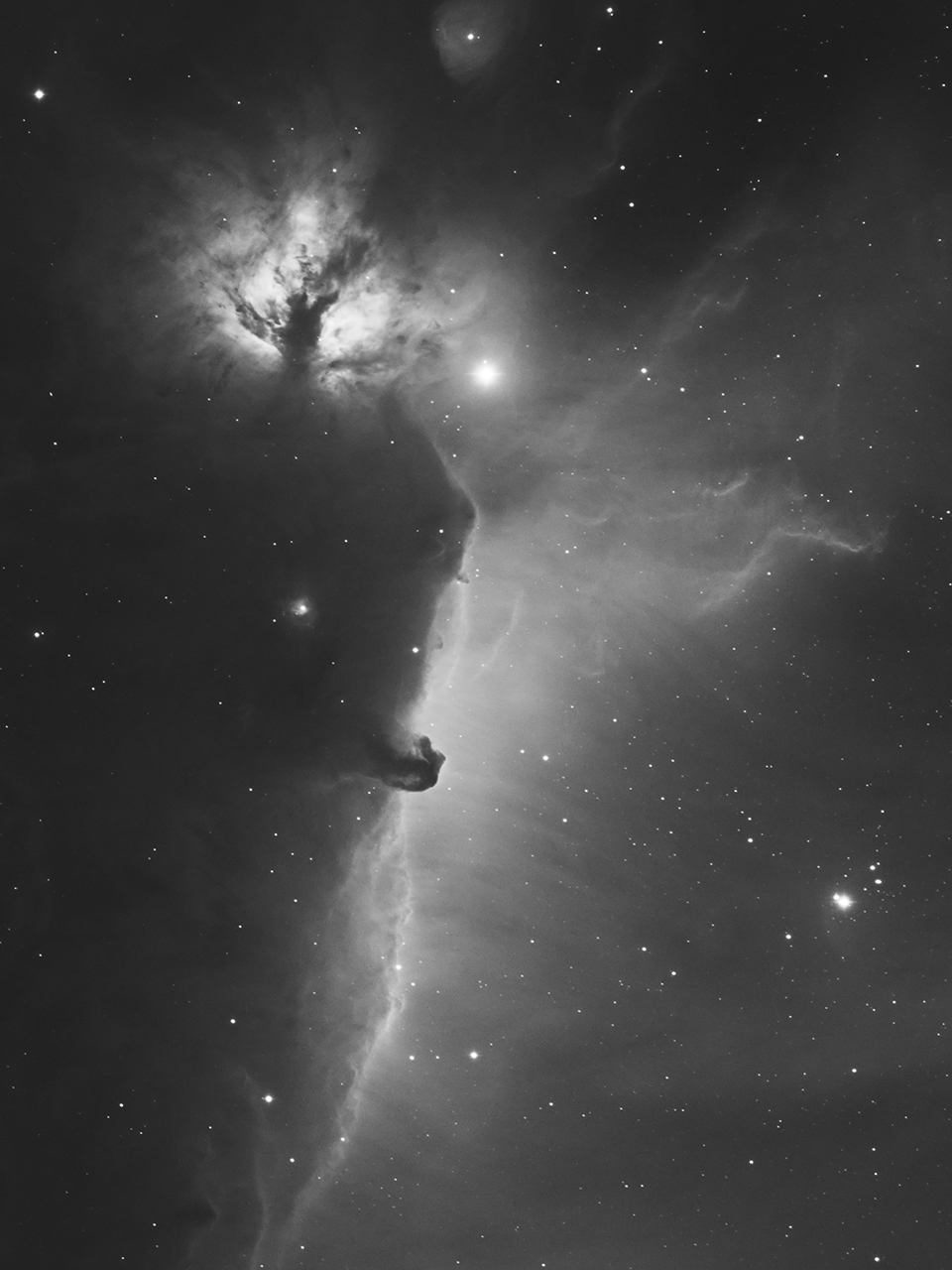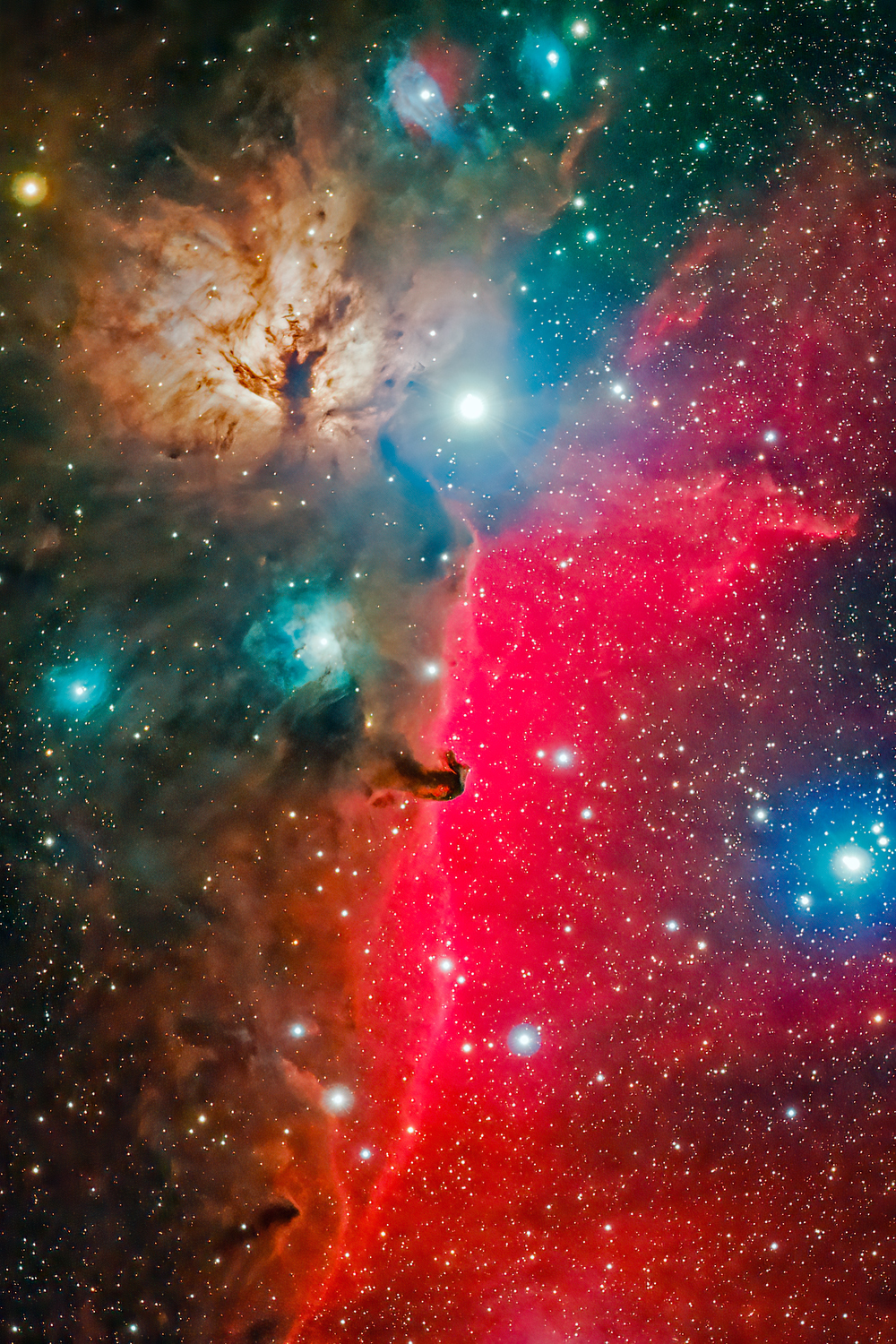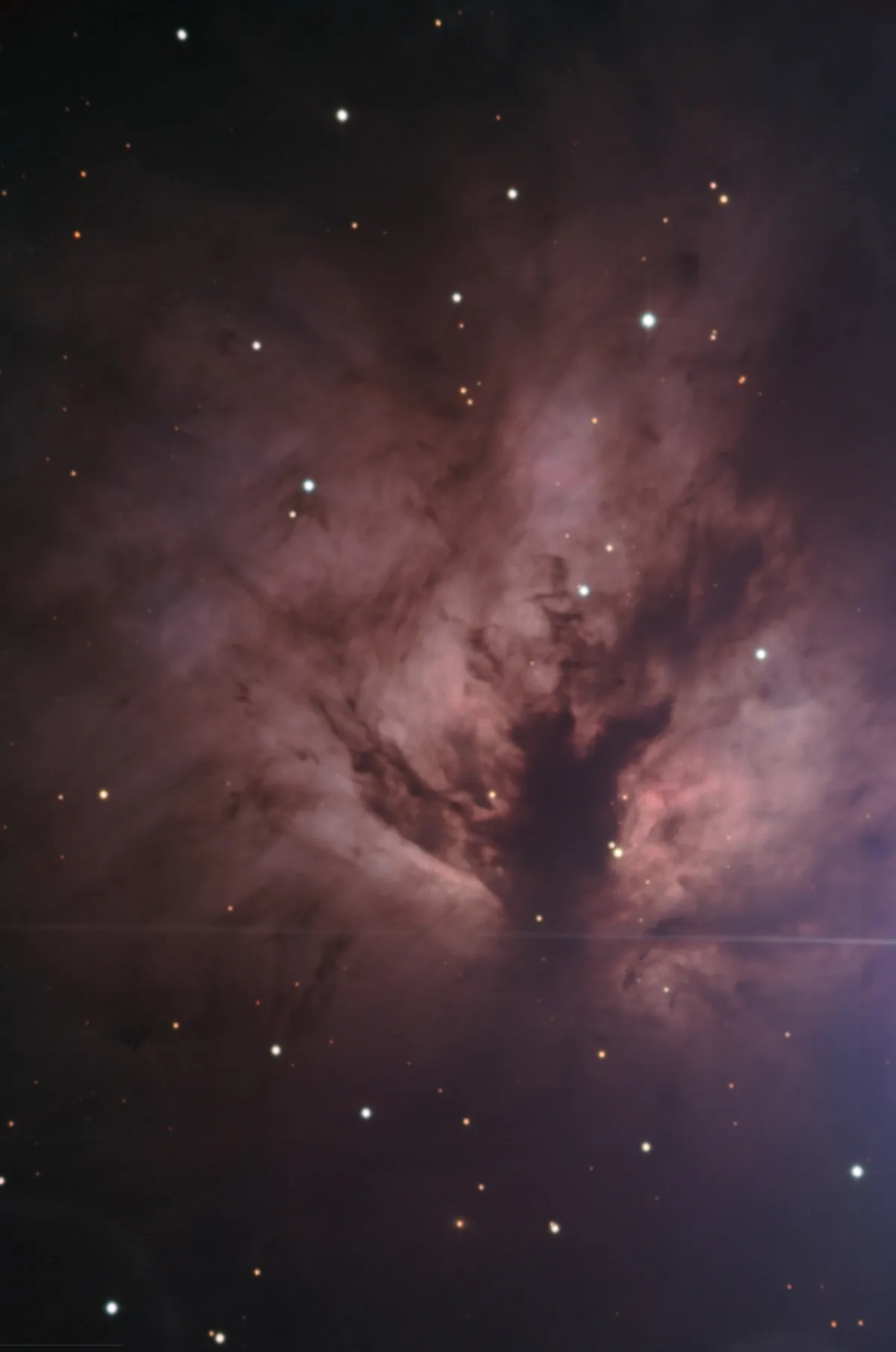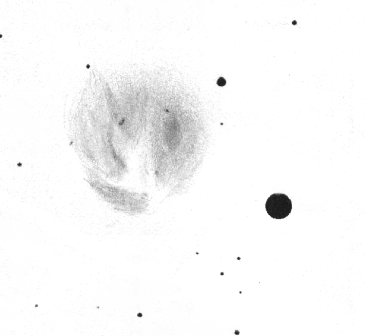Flaming Tree Nebula (NGC 2024)



History
On 1 January 1786 William Herschel discovered a «very large nebula» and listed it as V 28. He wrote: «Remarkable milky nebulosity, divided in 3 or 4 large patches, including a dark space; cannot take up less than ½ degree, but I suppose it to be much more extensive.» [464] John Herschel listed this nebula only in his «General Catalogue» published in 1864 as GC 1227 and the notes: «A remarkable object, irregular, partially resolved; bright; very very large; black space included.» [467]
Physical Properties
NGC 2024 is a bright spot in a gigantic nebula complex stretching from the Orion Nebula out to Barnard's Loop. For the most part, however, this nebula complex, about 1500 light-years away, is too faint to be visible to the naked eye with a telescope; Large, connected parts only appear on long-term exposures from very dark areas of the earth. This entire nebula complex is probably one or more very old remnants of a supernova, from which new stars and even planetary systems are formed.
The Flaming Tree Nebula is the most prominent part of a brighter nebula region around the 2.0 mag star Alnitak (ζ Orionis). It was knowingly first sighted by W. Herschel on 1 January 1786 and cataloged as V 28. He described it as «Remarkable milky nebulosity, divided in 3 or 4 large patches, including a dark space; cannot take up less than 1/2 degree, but I suppose it to be much more extensive.» [464]
| Designation | NGC 2024 |
| Type | EN |
| Right Ascension (J2000.0) | 05h 41m 42.0s |
| Declination (J2000.0) | -01° 51' 24" |
| Diameter | 30 × 30 arcmin |
| Metric Distance | 0.400 kpc |
| Dreyer Description | ! irr, B, vvL, black sp incl |
| Identification, Remarks | WH V 28; GC 1227; CED 55P; Flame nebula |
Finder Chart
NGC 2024 is once again a very easy-to-find object: focus on Alnitak, the left (east) belt star of Orion, and we're there. The nebula is just east of the bright star. Orion is at its best in the night sky during the months of August to May.
Visual Observation

150 mm aperture: Although Alnitak is very accommodating in finding NGC 2024, it does get in the way when trying to observe the nebula. Nevertheless, an observation is always worthwhile. This nebula is one of the objects that show a clear structure in shape and differences in brightness. Besides the large Orion and Horsehead Nebula, a detour is always worthwhile. In order to weaken the disturbingly bright light from Alnitak when making this drawing, a simple mask was made using a thin strip of adhesive tape, which was glued to the aperture of a 35 mm wide-angle eyepiece and rendered valuable services. This covered the bright star, and the whole effort took less than a minute. The nebula could be observed more relaxed and more details came to light. Filters didn't bring any significant benefit - clean and dry air is a prerequisite for successful detailed observation because of the outshining star. Visual observation shows very nicely the lighter areas divided by longitudinal darker bands. The nebula was therefore spontaneously dubbed the «cauliflower nebula» because it somehow resembles the structure of a longitudinal section of this vegetable. However, the name «Flaming Tree Nebula» is probably better known. In fact, one can see in it the silhouette of a trunk and large branches that stand in the bright fire. — 150 mm f/15 Lichtenknecker ED Refractor, 1996, Beat Kohler
400 mm Aperture: In the 21 mm Ethos, the nebula and dark lanes of NGC 2024 are already well discernible, but the nearby bright ζ Orionis interferes significantly. In the 13 mm Ethos, this can be better positioned outside the field of view. Additionally, more details in the nebula and dark lanes become apparent. — 400 mm f/4.5 Taurus Dobsonian, Hasliberg, 16. 12. 2023, SQM 21.2, Bernd Nies
